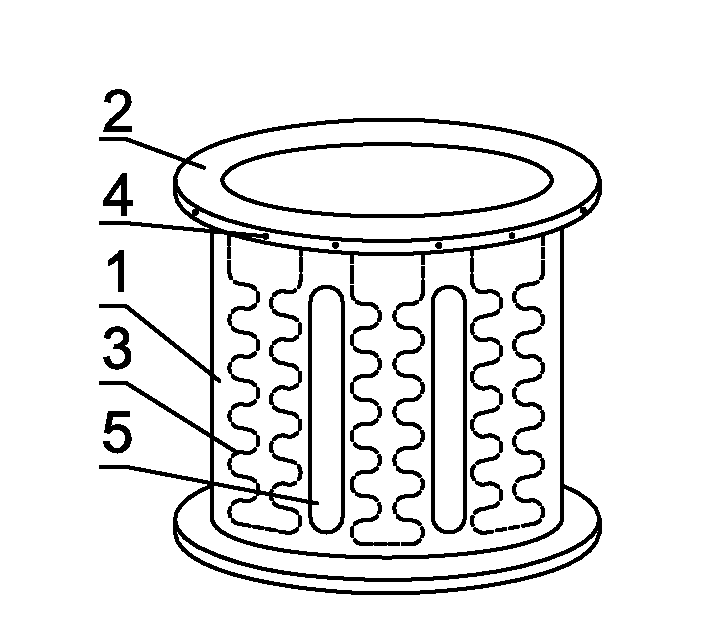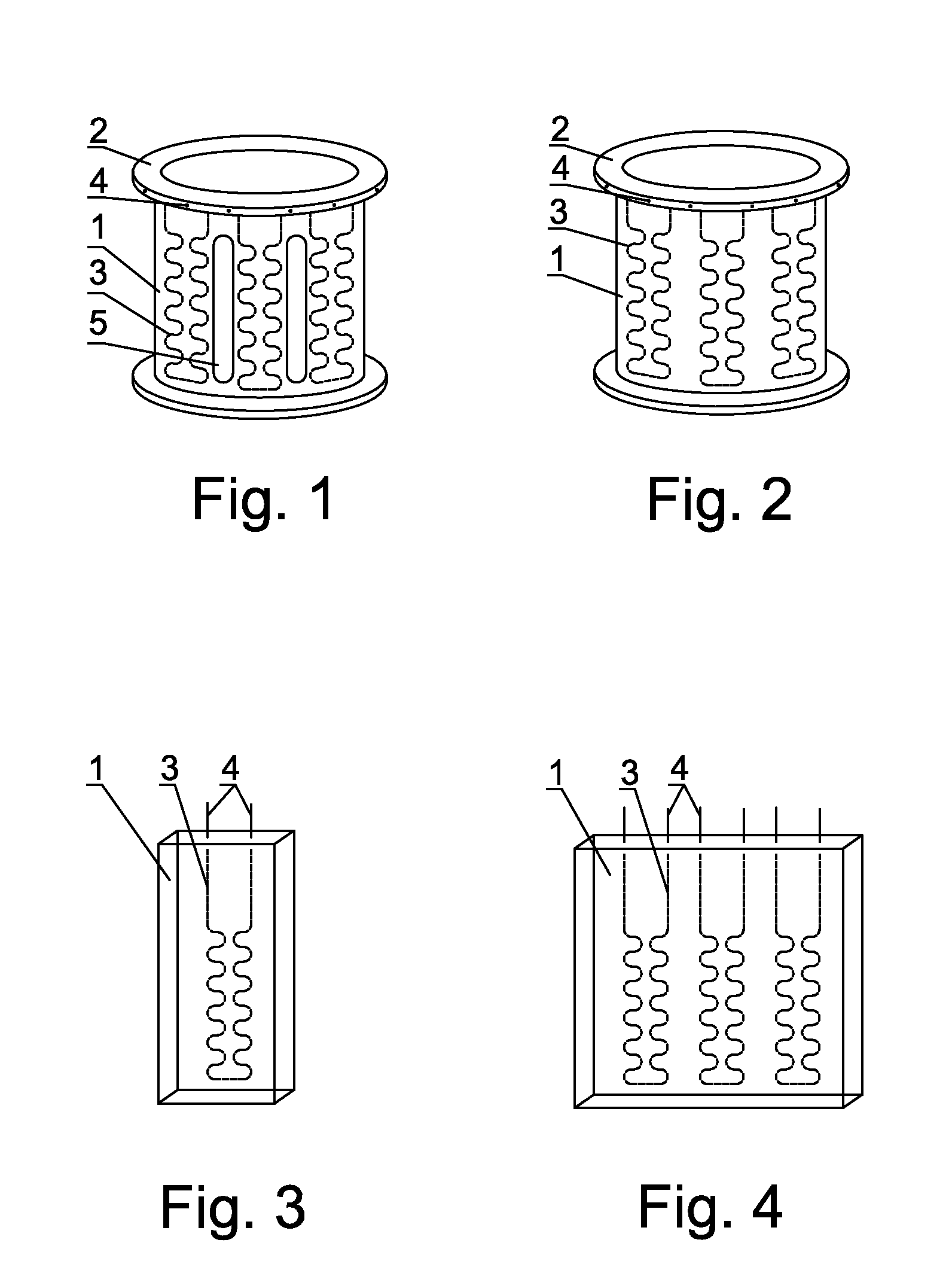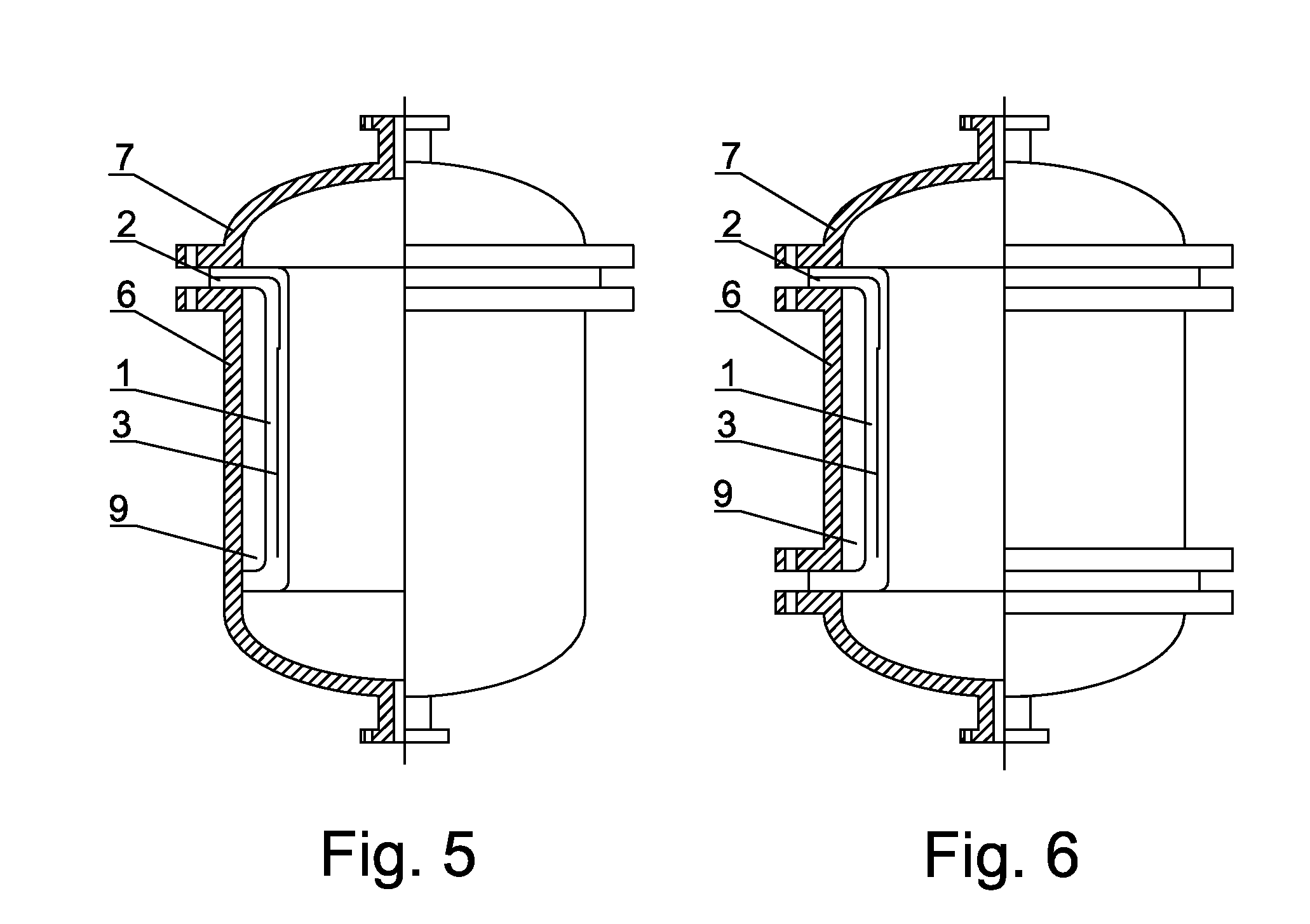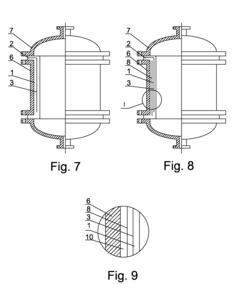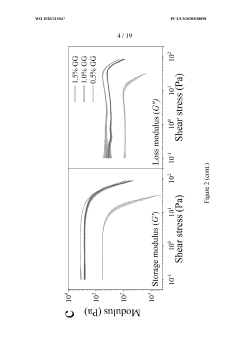PTFE and Thermal Management: Key Innovations
JUN 27, 20259 MIN READ
Generate Your Research Report Instantly with AI Agent
Patsnap Eureka helps you evaluate technical feasibility & market potential.
PTFE Thermal Evolution
Polytetrafluoroethylene (PTFE) has undergone significant evolution in its thermal management capabilities since its accidental discovery in 1938. Initially valued for its chemical inertness and low friction properties, PTFE's potential in thermal management was not immediately recognized. The thermal evolution of PTFE can be traced through several key stages, each marked by innovative breakthroughs and expanding applications.
In the 1950s and 1960s, researchers began to explore PTFE's thermal properties more extensively. They discovered its excellent heat resistance and low thermal conductivity, which opened up new possibilities in insulation applications. This period saw the development of PTFE-coated cookware and its use in aerospace heat shields, leveraging its ability to withstand high temperatures without degradation.
The 1970s and 1980s marked a significant shift in PTFE's thermal management capabilities. Scientists and engineers started modifying PTFE to enhance its thermal conductivity while maintaining its other desirable properties. This led to the development of filled PTFE composites, where materials like carbon, ceramics, or metal powders were incorporated into the PTFE matrix. These composites exhibited improved thermal conductivity, making them suitable for heat dissipation in electronic components and industrial machinery.
The 1990s saw the emergence of expanded PTFE (ePTFE) membranes, a breakthrough that revolutionized PTFE's role in thermal management. These microporous structures offered a unique combination of thermal insulation and breathability, finding applications in high-performance clothing and industrial filtration systems. Concurrently, advancements in nanotechnology enabled the creation of PTFE nanocomposites, further enhancing thermal conductivity and opening up new possibilities in miniaturized electronic cooling solutions.
In the 2000s and 2010s, the focus shifted towards optimizing PTFE's thermal properties for specific applications. This period saw the development of specialized PTFE blends and coatings tailored for extreme thermal environments, such as in semiconductor manufacturing and aerospace applications. Additionally, researchers explored the potential of PTFE in phase change materials (PCMs) for thermal energy storage, leveraging its chemical stability and controllable melting point.
The most recent developments in PTFE thermal management, from the late 2010s to the present, have centered on sustainability and advanced manufacturing techniques. Efforts to recycle and upcycle PTFE have led to new formulations with enhanced thermal properties, addressing both environmental concerns and performance requirements. Moreover, the advent of 3D printing technologies has enabled the creation of complex PTFE structures with optimized thermal management characteristics, pushing the boundaries of what's possible in heat transfer applications.
Throughout its thermal evolution, PTFE has consistently demonstrated its versatility and adaptability. From a simple insulator to a key component in advanced thermal management systems, PTFE continues to play a crucial role in addressing the thermal challenges of modern technology. As research progresses, we can expect further innovations in PTFE-based materials, driving improvements in thermal efficiency across various industries.
In the 1950s and 1960s, researchers began to explore PTFE's thermal properties more extensively. They discovered its excellent heat resistance and low thermal conductivity, which opened up new possibilities in insulation applications. This period saw the development of PTFE-coated cookware and its use in aerospace heat shields, leveraging its ability to withstand high temperatures without degradation.
The 1970s and 1980s marked a significant shift in PTFE's thermal management capabilities. Scientists and engineers started modifying PTFE to enhance its thermal conductivity while maintaining its other desirable properties. This led to the development of filled PTFE composites, where materials like carbon, ceramics, or metal powders were incorporated into the PTFE matrix. These composites exhibited improved thermal conductivity, making them suitable for heat dissipation in electronic components and industrial machinery.
The 1990s saw the emergence of expanded PTFE (ePTFE) membranes, a breakthrough that revolutionized PTFE's role in thermal management. These microporous structures offered a unique combination of thermal insulation and breathability, finding applications in high-performance clothing and industrial filtration systems. Concurrently, advancements in nanotechnology enabled the creation of PTFE nanocomposites, further enhancing thermal conductivity and opening up new possibilities in miniaturized electronic cooling solutions.
In the 2000s and 2010s, the focus shifted towards optimizing PTFE's thermal properties for specific applications. This period saw the development of specialized PTFE blends and coatings tailored for extreme thermal environments, such as in semiconductor manufacturing and aerospace applications. Additionally, researchers explored the potential of PTFE in phase change materials (PCMs) for thermal energy storage, leveraging its chemical stability and controllable melting point.
The most recent developments in PTFE thermal management, from the late 2010s to the present, have centered on sustainability and advanced manufacturing techniques. Efforts to recycle and upcycle PTFE have led to new formulations with enhanced thermal properties, addressing both environmental concerns and performance requirements. Moreover, the advent of 3D printing technologies has enabled the creation of complex PTFE structures with optimized thermal management characteristics, pushing the boundaries of what's possible in heat transfer applications.
Throughout its thermal evolution, PTFE has consistently demonstrated its versatility and adaptability. From a simple insulator to a key component in advanced thermal management systems, PTFE continues to play a crucial role in addressing the thermal challenges of modern technology. As research progresses, we can expect further innovations in PTFE-based materials, driving improvements in thermal efficiency across various industries.
Market Demand Analysis
The market demand for PTFE (Polytetrafluoroethylene) in thermal management applications has been experiencing significant growth in recent years. This surge is primarily driven by the increasing need for efficient heat dissipation solutions across various industries, including electronics, automotive, aerospace, and industrial manufacturing.
In the electronics sector, the miniaturization of devices and the rise of high-performance computing have created a pressing demand for advanced thermal management materials. PTFE, with its excellent thermal properties and chemical resistance, has become a preferred choice for heat sinks, thermal interface materials, and insulation in electronic components. The global market for thermal management in electronics is projected to grow substantially, with PTFE-based solutions playing a crucial role.
The automotive industry is another key driver of market demand for PTFE in thermal management. As electric vehicles (EVs) gain popularity, the need for effective battery thermal management systems has intensified. PTFE-based materials are being increasingly utilized in battery cooling systems, power electronics, and motor cooling applications in EVs. This trend is expected to continue as the automotive sector transitions towards electrification.
In aerospace applications, PTFE's high-temperature resistance and low friction properties make it ideal for thermal insulation in aircraft engines and other critical components. The growing aerospace industry, coupled with the push for more fuel-efficient and lightweight aircraft, is fueling the demand for PTFE-based thermal management solutions.
Industrial manufacturing processes, particularly in high-temperature environments, are also contributing to the market growth. PTFE's ability to maintain its properties under extreme conditions makes it valuable in applications such as industrial furnaces, chemical processing equipment, and oil and gas operations.
The market demand is further bolstered by ongoing research and development efforts to enhance PTFE's thermal properties. Innovations in PTFE composites and nanostructured materials are opening up new possibilities for improved thermal conductivity and heat dissipation efficiency. These advancements are expected to expand the application scope of PTFE in thermal management, potentially creating new market opportunities.
Environmental regulations and sustainability concerns are also influencing market trends. PTFE's long lifespan and recyclability align with the growing emphasis on sustainable materials in thermal management solutions. This factor is likely to drive adoption in environmentally conscious industries and regions with strict regulatory frameworks.
In the electronics sector, the miniaturization of devices and the rise of high-performance computing have created a pressing demand for advanced thermal management materials. PTFE, with its excellent thermal properties and chemical resistance, has become a preferred choice for heat sinks, thermal interface materials, and insulation in electronic components. The global market for thermal management in electronics is projected to grow substantially, with PTFE-based solutions playing a crucial role.
The automotive industry is another key driver of market demand for PTFE in thermal management. As electric vehicles (EVs) gain popularity, the need for effective battery thermal management systems has intensified. PTFE-based materials are being increasingly utilized in battery cooling systems, power electronics, and motor cooling applications in EVs. This trend is expected to continue as the automotive sector transitions towards electrification.
In aerospace applications, PTFE's high-temperature resistance and low friction properties make it ideal for thermal insulation in aircraft engines and other critical components. The growing aerospace industry, coupled with the push for more fuel-efficient and lightweight aircraft, is fueling the demand for PTFE-based thermal management solutions.
Industrial manufacturing processes, particularly in high-temperature environments, are also contributing to the market growth. PTFE's ability to maintain its properties under extreme conditions makes it valuable in applications such as industrial furnaces, chemical processing equipment, and oil and gas operations.
The market demand is further bolstered by ongoing research and development efforts to enhance PTFE's thermal properties. Innovations in PTFE composites and nanostructured materials are opening up new possibilities for improved thermal conductivity and heat dissipation efficiency. These advancements are expected to expand the application scope of PTFE in thermal management, potentially creating new market opportunities.
Environmental regulations and sustainability concerns are also influencing market trends. PTFE's long lifespan and recyclability align with the growing emphasis on sustainable materials in thermal management solutions. This factor is likely to drive adoption in environmentally conscious industries and regions with strict regulatory frameworks.
PTFE Thermal Challenges
Polytetrafluoroethylene (PTFE) has long been recognized for its exceptional thermal properties, making it a crucial material in thermal management applications. However, as technology advances and demands for more efficient thermal solutions increase, PTFE faces several challenges in meeting these evolving requirements.
One of the primary thermal challenges for PTFE is its relatively low thermal conductivity. While PTFE's insulating properties are beneficial in many applications, they can be a limitation when heat dissipation is required. This characteristic restricts its use in scenarios where rapid heat transfer is essential, such as in high-performance electronic devices or advanced cooling systems.
Another significant challenge is PTFE's thermal expansion behavior. The material exhibits a high coefficient of thermal expansion, which can lead to dimensional instability in applications involving temperature fluctuations. This property can cause issues in precision engineering and thermal interface materials, where maintaining consistent contact and dimensional stability is crucial for optimal performance.
PTFE's temperature limitations also present challenges in extreme thermal environments. Although it has excellent heat resistance, PTFE begins to degrade at temperatures above 260°C (500°F). This upper temperature limit restricts its use in high-temperature applications, particularly in aerospace and industrial settings where materials must withstand more severe thermal conditions.
The material's non-stick properties, while advantageous in many scenarios, can pose challenges in thermal management applications requiring strong adhesion or bonding. This characteristic can make it difficult to create effective thermal interfaces or to incorporate PTFE into composite materials designed for enhanced thermal performance.
PTFE's low surface energy also impacts its wettability, which can be problematic in applications involving heat transfer fluids or thermal interface materials. The hydrophobic nature of PTFE can hinder effective contact with cooling liquids or thermal compounds, potentially reducing overall heat transfer efficiency in certain thermal management systems.
Furthermore, the processing of PTFE for thermal applications presents its own set of challenges. The material's high melting point and viscosity make it difficult to mold or shape into complex geometries that might be required for optimized thermal management solutions. This limitation can restrict design flexibility and innovation in thermal management products.
As the demand for more efficient and compact thermal management solutions grows, addressing these challenges becomes increasingly important. Innovations in PTFE formulation, composite development, and surface modification techniques are being pursued to overcome these limitations and expand the material's applicability in advanced thermal management systems.
One of the primary thermal challenges for PTFE is its relatively low thermal conductivity. While PTFE's insulating properties are beneficial in many applications, they can be a limitation when heat dissipation is required. This characteristic restricts its use in scenarios where rapid heat transfer is essential, such as in high-performance electronic devices or advanced cooling systems.
Another significant challenge is PTFE's thermal expansion behavior. The material exhibits a high coefficient of thermal expansion, which can lead to dimensional instability in applications involving temperature fluctuations. This property can cause issues in precision engineering and thermal interface materials, where maintaining consistent contact and dimensional stability is crucial for optimal performance.
PTFE's temperature limitations also present challenges in extreme thermal environments. Although it has excellent heat resistance, PTFE begins to degrade at temperatures above 260°C (500°F). This upper temperature limit restricts its use in high-temperature applications, particularly in aerospace and industrial settings where materials must withstand more severe thermal conditions.
The material's non-stick properties, while advantageous in many scenarios, can pose challenges in thermal management applications requiring strong adhesion or bonding. This characteristic can make it difficult to create effective thermal interfaces or to incorporate PTFE into composite materials designed for enhanced thermal performance.
PTFE's low surface energy also impacts its wettability, which can be problematic in applications involving heat transfer fluids or thermal interface materials. The hydrophobic nature of PTFE can hinder effective contact with cooling liquids or thermal compounds, potentially reducing overall heat transfer efficiency in certain thermal management systems.
Furthermore, the processing of PTFE for thermal applications presents its own set of challenges. The material's high melting point and viscosity make it difficult to mold or shape into complex geometries that might be required for optimized thermal management solutions. This limitation can restrict design flexibility and innovation in thermal management products.
As the demand for more efficient and compact thermal management solutions grows, addressing these challenges becomes increasingly important. Innovations in PTFE formulation, composite development, and surface modification techniques are being pursued to overcome these limitations and expand the material's applicability in advanced thermal management systems.
Current PTFE Solutions
01 PTFE composites for thermal management
PTFE-based composites are developed for enhanced thermal management applications. These composites incorporate various materials to improve thermal conductivity while maintaining PTFE's desirable properties. The resulting materials offer improved heat dissipation capabilities for use in electronic devices, industrial equipment, and other applications requiring efficient thermal management.- PTFE composites for thermal management: PTFE-based composites are developed for enhanced thermal management applications. These composites incorporate various additives or fillers to improve thermal conductivity while maintaining PTFE's desirable properties such as chemical resistance and low friction. The resulting materials offer improved heat dissipation capabilities for use in electronic devices, industrial equipment, and other applications requiring efficient thermal management.
- PTFE coatings for heat transfer surfaces: PTFE coatings are applied to heat transfer surfaces to enhance thermal management. These coatings can improve heat dissipation efficiency, prevent fouling, and provide corrosion resistance. The application of PTFE coatings on heat exchangers, cooling systems, and other thermal management components can lead to improved overall system performance and longevity.
- Porous PTFE structures for thermal insulation: Porous PTFE structures are developed for thermal insulation applications. These structures utilize the low thermal conductivity of PTFE and the insulating properties of air trapped within the porous network. Such materials can be used in various thermal management scenarios, including building insulation, aerospace applications, and protective clothing.
- PTFE-based heat spreaders and heat sinks: PTFE is incorporated into heat spreaders and heat sinks to enhance thermal management in electronic devices. These components utilize PTFE's unique properties, such as its low surface energy and chemical inertness, in combination with thermally conductive materials to efficiently dissipate heat from electronic components, improving device performance and reliability.
- PTFE membranes for thermal management in batteries: PTFE membranes are utilized in battery thermal management systems. These membranes can help regulate temperature, prevent thermal runaway, and improve overall battery performance and safety. The use of PTFE membranes in battery systems can lead to enhanced thermal stability, longer battery life, and improved safety in various applications, including electric vehicles and energy storage systems.
02 PTFE coatings for heat transfer surfaces
PTFE coatings are applied to heat transfer surfaces to enhance thermal performance. These coatings can improve heat exchange efficiency, reduce fouling, and provide corrosion resistance. The application of PTFE coatings on heat exchangers, cooling systems, and other thermal management components can lead to improved overall system performance.Expand Specific Solutions03 PTFE-based thermal interface materials
Thermal interface materials incorporating PTFE are developed to improve heat transfer between components in electronic devices and other applications. These materials can fill air gaps and provide efficient thermal conduction paths, enhancing overall thermal management. The use of PTFE-based thermal interface materials can lead to improved cooling performance and increased reliability of electronic systems.Expand Specific Solutions04 PTFE membranes for heat and moisture management
PTFE membranes are utilized in thermal management applications that require both heat transfer and moisture control. These membranes can provide effective thermal insulation while allowing for moisture vapor transmission, making them suitable for use in clothing, building materials, and industrial applications where both thermal and moisture management are critical.Expand Specific Solutions05 PTFE-based heat spreaders and heat sinks
Heat spreaders and heat sinks incorporating PTFE are developed to enhance thermal management in electronic devices and other applications. These components utilize PTFE's unique properties to improve heat distribution and dissipation, leading to more efficient cooling of electronic components and improved overall system performance.Expand Specific Solutions
Key Industry Players
The PTFE and thermal management technology market is in a mature growth stage, with a global market size estimated to exceed $2 billion annually. The technology has reached a high level of maturity, with established players like DuPont, Daikin, and Solvay dominating the landscape. These industry leaders have developed advanced PTFE formulations and thermal management solutions through decades of R&D. However, innovation continues, particularly in niche applications and emerging markets. Companies like 3M, W.L. Gore, and AGC are actively pursuing new PTFE-based materials with enhanced thermal properties. Academic institutions such as ETH Zurich and Johns Hopkins University are also contributing to advancements through fundamental research into polymer science and heat transfer mechanisms.
Solvay Specialty Polymers Italy SpA
Technical Solution: Solvay has made significant advancements in PTFE-based thermal management solutions, particularly through their Tecnoflon® and Algoflon® product lines. They have developed high-performance PTFE grades with enhanced thermal conductivity for use in thermal interface materials and heat spreaders[14]. Solvay's innovations include PTFE-based compounds that incorporate thermally conductive fillers while maintaining the material's excellent chemical resistance and low friction properties[15]. They have also introduced modified PTFE materials with improved creep resistance and thermal stability, suitable for high-temperature sealing applications in automotive and industrial sectors[16]. Solvay's research has led to the development of PTFE micropowders that can be used as additives in various thermal management composites, enhancing their overall heat dissipation capabilities[17].
Strengths: Extensive experience in specialty polymers, strong focus on sustainable solutions, and global research and production capabilities. Weaknesses: Potential regulatory challenges related to fluoropolymer production and competition from alternative materials in some applications.
DAIKIN INDUSTRIES Ltd.
Technical Solution: Daikin has made significant advancements in PTFE-based thermal management solutions, particularly with their NEOFLON™ series. They have developed high-purity PTFE grades specifically designed for thermal management applications in electronics and automotive industries. Daikin's innovations include PTFE micropowders that can be incorporated into thermal interface materials to enhance heat dissipation[4]. They have also introduced PTFE-based heat-resistant coatings that provide excellent thermal stability and low friction properties, improving the efficiency of heat exchangers and other thermal management systems[5]. Daikin's research has led to the development of modified PTFE materials with improved thermal conductivity while maintaining the chemical resistance and low dielectric properties of traditional PTFE[6].
Strengths: Strong focus on environmentally friendly fluoropolymer technologies, extensive global presence, and diverse product portfolio. Weaknesses: Relatively higher production costs and potential regulatory challenges in some markets due to fluoropolymer concerns.
PTFE Thermal Patents
Polytetrafluoroethylene Heating Product and Its Manufacturing Method
PatentInactiveUS20100258552A1
Innovation
- Embedding electrical heating elements within a PTFE substrate with exposed terminals for external power connection, allowing for the creation of cylindrical or plate-type PTFE heating products with reduced thermal resistance and increased efficiency, and incorporating a metal mesh for bi-functional corrosion resistance and heating.
Fluoropolymer shear-thinning INKS and methods of making and using same
PatentWO2020215047A1
Innovation
- Development of shear-thinning inks comprising PTFE particles, a medium, and a shear-thinning agent like gellan gum, combined with a multistage thermal treatment process for direct ink writing, allowing for the creation of complex PTFE structures with tunable mechanical properties.
Environmental Impact
The environmental impact of PTFE (Polytetrafluoroethylene) and its use in thermal management applications is a complex and multifaceted issue that requires careful consideration. PTFE, known for its excellent thermal properties and chemical resistance, has become a crucial material in various industries, including electronics, automotive, and aerospace. However, its production and disposal processes raise significant environmental concerns.
The manufacturing of PTFE involves the use of perfluorooctanoic acid (PFOA), a persistent organic pollutant that has been linked to various health and environmental issues. While efforts have been made to phase out PFOA in PTFE production, the long-term environmental effects of alternative processes are still under scrutiny. The durability of PTFE, while beneficial for many applications, also means that it does not biodegrade easily, potentially contributing to long-lasting environmental pollution.
In thermal management applications, PTFE's role in improving energy efficiency and reducing heat-related failures in electronic devices can indirectly contribute to environmental benefits. By enhancing the lifespan and performance of electronic components, PTFE-based thermal management solutions can reduce electronic waste and the need for frequent replacements. This aspect aligns with sustainability goals and the circular economy concept.
However, the end-of-life management of PTFE-containing products remains a significant challenge. Recycling PTFE is technically feasible but often economically impractical due to the high costs and energy requirements involved. Incineration of PTFE waste can release harmful fluorine compounds, necessitating specialized disposal methods to mitigate environmental risks.
Recent innovations in PTFE technology have focused on developing more environmentally friendly production methods and improving the material's recyclability. Some researchers are exploring bio-based alternatives that could potentially replace PTFE in certain thermal management applications, offering a more sustainable solution. Additionally, advancements in nanomaterial science are paving the way for PTFE composites with enhanced thermal properties, potentially reducing the overall material usage while maintaining or improving performance.
The balance between the environmental costs of PTFE production and its benefits in thermal management applications remains a topic of ongoing research and debate. As industries continue to prioritize sustainability, the development of greener alternatives and more efficient recycling processes for PTFE will likely become increasingly important. This shift could lead to significant changes in how thermal management solutions are designed and implemented across various sectors, with a greater emphasis on lifecycle assessment and environmental impact.
The manufacturing of PTFE involves the use of perfluorooctanoic acid (PFOA), a persistent organic pollutant that has been linked to various health and environmental issues. While efforts have been made to phase out PFOA in PTFE production, the long-term environmental effects of alternative processes are still under scrutiny. The durability of PTFE, while beneficial for many applications, also means that it does not biodegrade easily, potentially contributing to long-lasting environmental pollution.
In thermal management applications, PTFE's role in improving energy efficiency and reducing heat-related failures in electronic devices can indirectly contribute to environmental benefits. By enhancing the lifespan and performance of electronic components, PTFE-based thermal management solutions can reduce electronic waste and the need for frequent replacements. This aspect aligns with sustainability goals and the circular economy concept.
However, the end-of-life management of PTFE-containing products remains a significant challenge. Recycling PTFE is technically feasible but often economically impractical due to the high costs and energy requirements involved. Incineration of PTFE waste can release harmful fluorine compounds, necessitating specialized disposal methods to mitigate environmental risks.
Recent innovations in PTFE technology have focused on developing more environmentally friendly production methods and improving the material's recyclability. Some researchers are exploring bio-based alternatives that could potentially replace PTFE in certain thermal management applications, offering a more sustainable solution. Additionally, advancements in nanomaterial science are paving the way for PTFE composites with enhanced thermal properties, potentially reducing the overall material usage while maintaining or improving performance.
The balance between the environmental costs of PTFE production and its benefits in thermal management applications remains a topic of ongoing research and debate. As industries continue to prioritize sustainability, the development of greener alternatives and more efficient recycling processes for PTFE will likely become increasingly important. This shift could lead to significant changes in how thermal management solutions are designed and implemented across various sectors, with a greater emphasis on lifecycle assessment and environmental impact.
PTFE Safety Regulations
PTFE (Polytetrafluoroethylene) is widely used in thermal management applications due to its unique properties. However, its use is subject to various safety regulations to ensure the protection of human health and the environment. These regulations cover different aspects of PTFE production, handling, and disposal.
In the manufacturing process, strict guidelines are in place to control the release of perfluorooctanoic acid (PFOA), a chemical historically used in PTFE production. The U.S. Environmental Protection Agency (EPA) has implemented a PFOA Stewardship Program, encouraging manufacturers to eliminate PFOA and related chemicals from their products and emissions. Similar initiatives exist in other regions, such as the European Union's REACH regulation.
Occupational safety is another crucial aspect of PTFE safety regulations. The Occupational Safety and Health Administration (OSHA) in the United States has established permissible exposure limits for PTFE particles in the workplace. These limits aim to prevent respiratory issues that may arise from inhaling PTFE dust or fumes, particularly when the material is heated to high temperatures.
Fire safety is a significant concern when using PTFE in thermal management applications. While PTFE itself is non-flammable, it can release toxic fumes when exposed to extreme heat. Building codes and fire safety regulations often specify the conditions under which PTFE-based materials can be used in construction and industrial settings.
Environmental regulations also play a role in PTFE safety. The disposal of PTFE products and manufacturing waste is regulated to prevent environmental contamination. In many jurisdictions, PTFE is classified as a non-hazardous waste, but specific guidelines for its disposal may still apply.
Product safety regulations ensure that PTFE used in consumer products, especially those in contact with food or in medical applications, meets stringent purity and performance standards. The U.S. Food and Drug Administration (FDA) has established guidelines for the use of PTFE in food-contact materials and medical devices.
As research continues to uncover potential long-term effects of PTFE and related compounds, regulatory bodies are continuously updating their guidelines. This ongoing process ensures that safety regulations evolve alongside our understanding of PTFE's impact on human health and the environment, maintaining a balance between the material's beneficial properties and potential risks.
In the manufacturing process, strict guidelines are in place to control the release of perfluorooctanoic acid (PFOA), a chemical historically used in PTFE production. The U.S. Environmental Protection Agency (EPA) has implemented a PFOA Stewardship Program, encouraging manufacturers to eliminate PFOA and related chemicals from their products and emissions. Similar initiatives exist in other regions, such as the European Union's REACH regulation.
Occupational safety is another crucial aspect of PTFE safety regulations. The Occupational Safety and Health Administration (OSHA) in the United States has established permissible exposure limits for PTFE particles in the workplace. These limits aim to prevent respiratory issues that may arise from inhaling PTFE dust or fumes, particularly when the material is heated to high temperatures.
Fire safety is a significant concern when using PTFE in thermal management applications. While PTFE itself is non-flammable, it can release toxic fumes when exposed to extreme heat. Building codes and fire safety regulations often specify the conditions under which PTFE-based materials can be used in construction and industrial settings.
Environmental regulations also play a role in PTFE safety. The disposal of PTFE products and manufacturing waste is regulated to prevent environmental contamination. In many jurisdictions, PTFE is classified as a non-hazardous waste, but specific guidelines for its disposal may still apply.
Product safety regulations ensure that PTFE used in consumer products, especially those in contact with food or in medical applications, meets stringent purity and performance standards. The U.S. Food and Drug Administration (FDA) has established guidelines for the use of PTFE in food-contact materials and medical devices.
As research continues to uncover potential long-term effects of PTFE and related compounds, regulatory bodies are continuously updating their guidelines. This ongoing process ensures that safety regulations evolve alongside our understanding of PTFE's impact on human health and the environment, maintaining a balance between the material's beneficial properties and potential risks.
Unlock deeper insights with Patsnap Eureka Quick Research — get a full tech report to explore trends and direct your research. Try now!
Generate Your Research Report Instantly with AI Agent
Supercharge your innovation with Patsnap Eureka AI Agent Platform!
